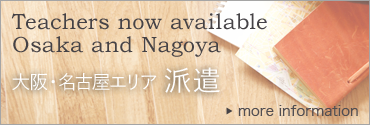July Guide Sign
YUKATA(an informal, light, unlined,cotton kimono)is worn in summer.
Recently it is getting popular among young ladies in the variety of designs and brilliant colors.
It is basically dyed indigo blue (aizome) using white cotton.
Aizome is produced using a very old coloring technique passed on from centuries ago in Japan.
It’s a dye which is made from plants leaves and goes through lye fermentation with only natural materials.
Indigo is one of the oldest plant dyes in existence, first brought to Japan about 1400 years ago.
Since it was very valuable in an ancient time, only persons of the privileged classes could put it on.
In the War Period (1467-1568),the samurai wore the aizome clothes under their armor because of its antimicrobial and deodorizing effects.
Over time, aizome materials were more commonly used by people from the Edo Period (1603-1867).
Cotton and indigo dye matched so well that aizome dyed items became a part of Japanese life.
Even famous “Ukiyoe” ( floating world paintings) artists like Hokusai and Hiroshige used indigo pigment.to depict that era.
Fermented indigo is alive and breathing.
Aizome can create various shade of blue depending on the dyeing time
and the level of fermentation. ranging from “aijiro (indigo white),” the lightest shade closest to white, to “noukon (navy blue),” the darkest shade closest to black,
The popularity of aizome which is time consuming to make, declined for a while.after synthetic indigo appeared.
However, aizome items have been revalued recently as beautiful Japanese traditional handicraft.
Its deeper and more fascinating color attracts people nationwide and worldwide,as exemplified by popularity of Tokyo Skytree, a new landmark in Tokyo.
Its body color is “aijiro”
https://nicjapanese.com
Do you prefer having lessons at your own place at your own convenience?
NIC can dispatch Japanese teachers.
Do you prefer having lessons at your own place at your own convenience?
NIC can dispatch Japanese teachers.





 Contact us
Contact us 03-3454-5002
03-3454-5002 Application Form
Application Form



